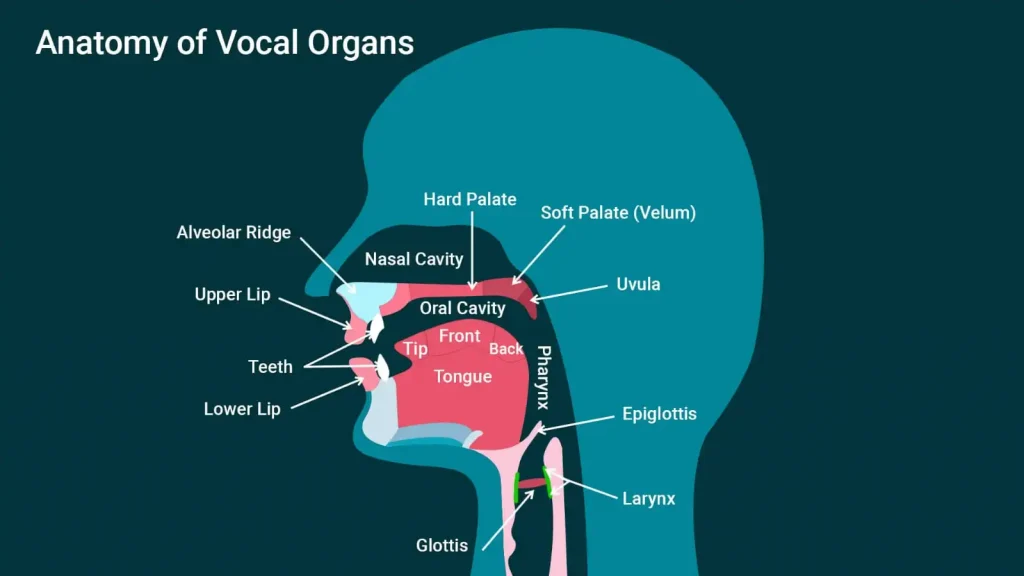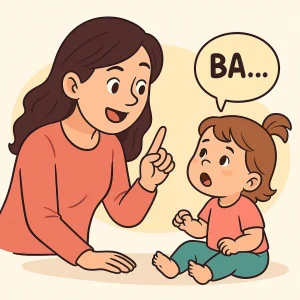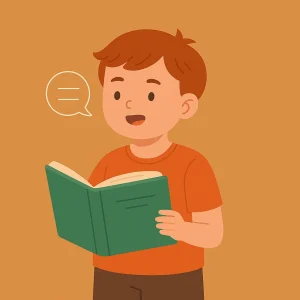Mastering Dental Sounds in Children: A Parent’s Guide
By Rajini D
Last Updated: March 11, 2024
Dental sounds are essential for clear and effective speech in children. These sounds are produced using the tongue against the upper teeth. The common dental sounds in English are /θ/ (as in “thin”) and /ð/ (as in “this”). Mastery of these sounds typically occurs in children around the ages of 4 to 7 years. Proper development of dental sounds is crucial for articulate speech and language skills.

Book Free Speech Therapy Consultation.
Understanding Dental Sounds
Defining Dental Sounds:
Dental sounds involve the interaction between the tongue and the upper front teeth. They are key elements in many languages and are integral for speech clarity. The sounds /θ/ and /ð/ are the primary examples, each with distinct features:
- /θ/ is a voiceless sound, produced without vocal cord vibration.
- /ð/ is a voiced sound, produced with vocal cord vibration.
For more information on speech and language milestones, check out our detailed guide.
Techniques for Teaching Dental Sounds
Technique 1: Articulation Therapy Progression
Syllables to Words:
Start with simple syllables like “tha”, “the”, “thi”. Progress to more complex syllables and words, such as “thin”, “brother”, and “this”.
Words to Sentences:
After mastering individual sounds and words, combine them into short sentences to enhance your speaking ability.
Also Read: Home-Based Occupational Therapy Activities.
Technique 2: Tactile and Kinesthetic Cues
Physical Cues for Each Sound:
Teach children the correct placement of the tongue against the upper teeth for each sound, such as gently pressing the tongue for the /θ/ and /ð/ sounds.
Technique 3: Visual and Auditory Support
Visual Articulation Cards:
Use visual aids illustrating the tongue and teeth positions for each dental sound, aiding in understanding their physical production.
Auditory Repetition Exercises:
Regular practice of these sounds in different contexts reinforces learning.
Discover more about what to expect in speech and language development at these ages by reading about 2 to 3-year milestones and 3 to 4-year milestones.
Specific Practices for Each Dental Sound
The /θ/ Sound (as in “thin”)
Teaching Steps:
- Tongue Placement: Teach the child to place the tip of their tongue against the upper teeth.
- Breath Control: Instruct them to release air without using vocal cord vibration, creating the /θ/ sound.
- Practice: Begin with the /θ/ sound, then syllables like “tha”, “the”, “thi”, and words like “thin”, “thumb”, “bath”.
The /ð/ Sound (as in “this”)
Teaching Steps:
- Voice Vibration: Unlike /θ/, /ð/ is voiced. Teach the child to feel the vibration in their throat.
- Tongue Placement: Similar tongue positioning as /θ/ but with vocal cord vibration.
- Comparison with /θ/: Demonstrate the difference between the two sounds.
If your child is on the autism spectrum and experiencing speech delays or atypical phonological processes, learn about our Speech Therapy for Autism.
Advanced Practice and Word Lists

For each sound, provide word lists that practice the sound in initial, final, and medial positions. Include a variety of words ranging from simple to more complex structures.
The /θ/ Sound
- Syllable Combinations: Practice combining /θ/ with various vowels – tha, the thi, tho, thu.
- Drills: Practice with pairs like “thin-bin”, “thick-kick”, “thump-bump” to distinguish /θ/ from other sounds.
- Word List for /θ/ sound: Practice /θ/ sound in Initial, Final, and Medial position of a word.
Word List for /θ/ sound:
‘/θ/’ Sound in the Initial Position of a Word
CVC Words
- ‘a’ vowel: Thad, than, thab, thack, thash, thad, thank
- ‘e’ vowel: Then, theth, thell, thent, theck, theth, thex
- ‘i’ vowel: Thin, this, thick, thill, thim, thint, think
- ‘o’ vowel: Thod, thong, thob, thock, thorn, thot, tholl
- ‘u’ vowel: Thud, thug, thud, thuff, thusk, thull, thump
More Complex Syllable Structures
- CVCC: Thrift, thrab, thrink, throck, thrum, thrump, threst
- CCVC: Thwart, thwack, thwirl, thwing, thwomp, thwock, thwain
- CVVC: Theat, thoom, thool, thoal, thoose, theek, threep
Additional Words
- Varied syllables: Therapy, thermal, thistle, thunder, thicken, thimble, thorny
‘/θ/’ Sound in Final Position of a Word
CVC Words
- ‘a’ vowel: Bath, path, wrath, lath, hath, gath, nath
- ‘e’ vowel: Breathe, seethe, lithe, sheathe, tithe, bathe, scythe
- ‘i’ vowel: Pith, myth, smith, with, fifth, sixth, zith
- ‘o’ vowel: Loth, sloth, cloth, froth, moth, broth, both
- ‘u’ vowel: Ruth, tooth, youth, smooth, uncouth, sooth, truth
More Complex Syllable Structures
- CVCC: Hearth, month, depth, north, worth, fourth, warmth
Additional Words
- Varied syllables: Mouthful, healthful, forthwith, betroth, underneath, teeth, wreath
‘/θ/’ Sound in the Medial Position of a Word
CVC Words
- ‘e’ vowel: Ether, blather, gather, nether, tether, weather, heather
- ‘i’ vowel: Bother, frothy, wither, either, slither, smithy, pithy
- ‘o’ vowel: Lothar, mothball, bother, clothe, soothe, loathe, smooth
Additional Words
- Varied syllables: Anything, everything, nothing, something, soothing, breathing, writhing
The /θ/ sound, while common in English, is rarely found in complex syllable structures in the medial position and is even less common in the final position of words.
The /ð/ Sound
- Syllable Combinations: Practice combining /ð/ with various vowels – ða, ðe, ði, ðo, ðu.
- Drills: Practice with pairs like “this-kiss”, “there-care”, “though-dough” to distinguish /ð/ from other sounds.
- Word List for /ð/ sound: Practice /ð/ sound in Initial, Final, and Medial position of a word.
Word List for /ð/ sound:
/dh/ Sound in Initial Position of a Word
The, This, That, They, Them, There, Though, Thus, These, Those
/dh/ Sound in the Medial Position of a Word
CVC Words
- ‘a’ vowel: Father, rather, gather, lather, another, slather, blather
- ‘e’ vowel: Bother, feather, tether, weather, leather, nether, whether
- ‘i’ vowel: Wither, neither, either, slither, dither, hither, tither
- ‘o’ vowel: Mother, bother, loather, smoother, other, brother, souther
- ‘u’ vowel: Further, blather, lather, rather, slather, souther, nuther
More Complex Syllable Structures
- CVCC: Smoothly, loathed, loather, writhed, swathed, scythed, breathed
Additional Words
- Varied syllables: Withering, fatherhood, motherland, southern, together, weathering, gathering
‘/dh/’ Sound in Final Position of a Word
CVC Words
- ‘e’ vowel: Breathe, seethe, withe, scythe, clothe, bethe, ethe
- ‘o’ vowel: Loathe, soothe, betroth, beclothe, unclothe, scythe, writhe
Learn more about Autism Spectrum Disorder and its therapies.
Using Books and Everyday Activities
Select books rich in dental sounds and integrate these sounds into daily activities. Emphasize and repeat the dental sounds in a fun and engaging way. For example:
Book Recommendations by Sound:
SoundBook TitleKey Words/θ/”The Three Little Pigs”three, through/ð/”There’s a Wocket in My Pocket!” by Dr. Seussbrother, mother
Conclusion
Understanding and mastering dental sounds is vital for a child’s language development. Recognizing the typical age for mastering these sounds and identifying challenges early can lead to effective support. This comprehensive approach ensures a strong foundation for language skills.
Discover the benefits and features of our online speech therapy services.
For insights into how online speech therapy can support your toddler’s development, visit our article on Understanding Online Speech Therapy for Toddlers.
Frequently Asked Questions
1. What Are Dental Sounds in Speech Development?
Dental sounds are speech sounds produced by the tongue against the upper front teeth, crucial for clear speech, including sounds like /θ/ (as in “thin”) and /ð/ (as in “this”).
2. At What Age Should Children Master Dental Sounds?
Children typically master dental sounds between the ages of 4 to 7 years, a critical period for their speech and language development.
3. How Can Parents Help Their Children Develop Dental Sounds?
Parents can support their children’s development of dental sounds through specific articulation exercises, tactile cues, and visual and auditory reinforcement.
4. Are There Specific Techniques to Teach Each Dental Sound?
Yes, specific teaching techniques involve correct tongue positioning and breath control for sounds like /θ/ and /ð/, and understanding the difference between voiceless and voiced sounds.
5. What Are Some Effective Learning Resources for Dental Sounds?
Effective resources for learning dental sounds include visual aids, repetition exercises, and books rich in /θ/ and /ð/ sounds, providing engaging and practical learning experiences.
6. How to Identify and Address Challenges in Dental Sound Development?
Regular monitoring of a child’s speech can help identify challenges in dental sound development and early consultation with a speech therapist can provide targeted support.
7. Can Everyday Activities Be Used to Practice Dental Sounds?
Absolutely! Incorporating dental sounds into daily activities like reading, talking, and playing can make practice enjoyable and effective for children.
Interested in the top online speech therapy websites? Find out more here.
About the Author:
Rajini Darugupally
M.Sc., Speech-Language Pathologist (9+ years of experience)
Rajini is a passionate and dedicated Speech-Language Pathologist with over 9+ years of experience, specializing in both developmental speech and language disorders in children and rehabilitation in adults. Driven by a desire to empower each individual to find their voice, Rajini brings a wealth of experience and a warm, genuine approach to therapy.
Currently, at Wellness Hub, she thrives in a team environment that values innovation, compassion, and achieving results for their clients.
Connect with Rajini to learn more about how she can help you or your loved one find their voice.
Book your Free Consultation Today
Parent/Caregiver Info:
Client’s Details:
* Error Message









